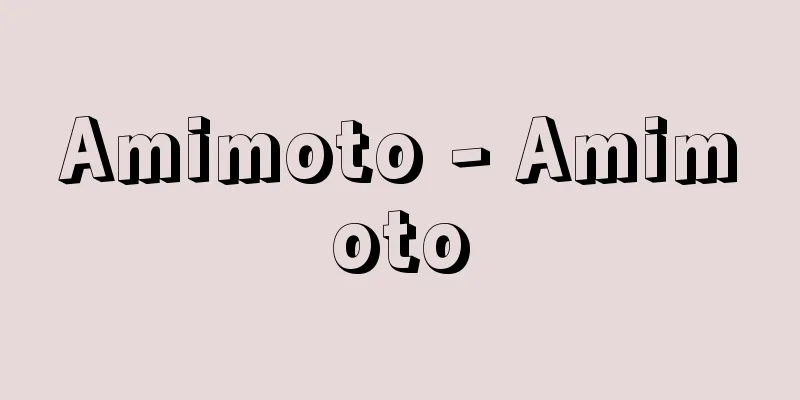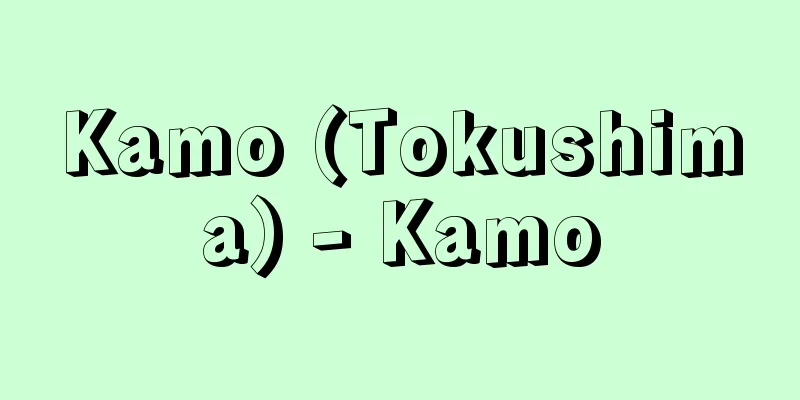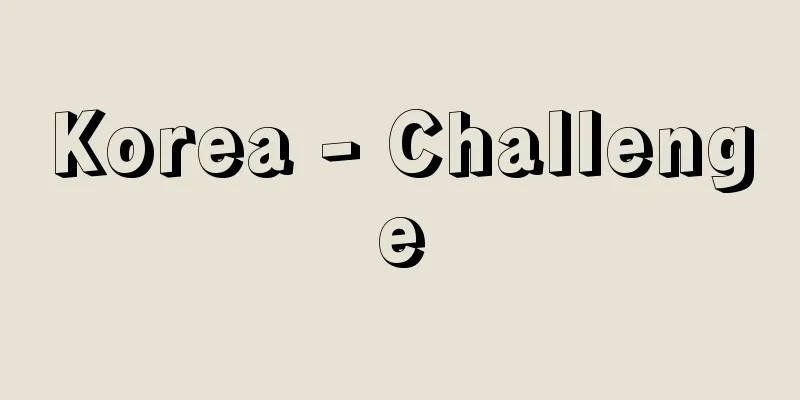Amimoto - Amimoto

|
The owner of the net, and usually also the manager of the fishing business. The same as the net owner, it is also called "domoto", but the name varies depending on the region. The person who provides the labor to the net owner and does the actual work is the net owner (amiko), and in many cases the net owner and the net owner have a feudal status relationship. The origins of large-scale net fishing in Japan and its organization date back to the late Middle Ages. Most fishing villages in Japan are called coastal fishing villages, and the basic lifestyle is half farming, half fishing. There was a disparity in the ownership of nets between the regular farmers and the tenant farmers, but the regular farmers had relatively equal rights among themselves, and they were called peasant nets or village-owned nets. The distribution of the catch was also equal based on the peasant stocks. However, with the penetration of the monetary economy in the late Edo period and the resulting impoverishment, as well as the advancement of fishing technology and the increase in the size of nets, the peasant nets that had been maintained equally declined, and the fishing industry changed to one centered on the net owners, who could be called the village-based bourgeoisie. In most cases, the relationship between the fishing boss and the fishing girl is that of master and apprentice, but the fishing boss takes care of the fishing girl by providing her with a place to live, food, and land to cultivate, while the fishing girl is subordinate to the fishing boss. In some places, this relationship continues hereditarily for generations. On the other hand, in other places, the contract between the two parties is relatively free and is renewed annually, and the fishing boss will invite the fishing girl to a drinking party on a special ritual day established in the area, such as the boat celebration in February, Little New Year, or Obon, and attendance at this party will determine the fishing girl's employment relationship for the year. The allocation of the catch between the net owner and the net workers is usually called "shirowake," and as a rule, the net workers are allocated equally. Those with special roles such as leaders or boatmen usually receive more than their share. Net owners seek out excellent leaders, and there are many cases where net workers come to work from specific villages. The privileges of net owners were protected by the fishing rights system even after the Meiji era, but with the reform of the fishing system after World War II, they handed over their fishing rights to fishing cooperatives and lost their privileged status. However, some places still retain the old system. [Takenori Noguchi] Source: Shogakukan Encyclopedia Nipponica About Encyclopedia Nipponica Information | Legend |
|
網の所有者であり、通例漁業の経営者でもある。網主と同じで「どうもと」ともいい、地方により呼称は異なる。網元に労力を提供し、実際の仕事をするのが網子(あみこ)であり、網元と網子が封建的な身分関係にある場合が多い。日本における規模の大きい網漁業とその組織の発生はさほど古くなく、中世後期以降に求められる。日本の漁村はほとんどが沿岸漁村とよばれるものであり、半農半漁の生活を基礎としており、網の所有については本百姓と小作層の間には、格差があったが本百姓同士の間では比較的平等な権利があり、百姓網や村持網(むらもちあみ)とよばれていた。漁獲物の分配も百姓株に基づき平等に配分されていた。しかし、江戸時代後期の貨幣経済の浸透とそれによる疲弊化、また漁業技術の進歩と網の大型化によって平等に維持されてきた百姓網は衰え、在村ブルジョアジーというべき網元を中心とした漁業へと変化していった。網元と網子は、親方・子方の関係にある場合が多いが、網元は網子に住居、食物、耕作地なども与えて世話をする一方、網子は網元に隷属する。そしてその関係が何代も世襲的に継続するという所もある。また逆に双方の契約が比較的自由で1年ごとにそれを更新する所もあり、2月の船祝いや小正月とか盆とかその土地に定まった特別の儀礼の日に網元が網子を招いて酒宴を開き、そこに列席したことによって1年間の雇用関係が決定したりする。 網元と網子の漁獲高の配分は、通常「しろわけ」とよぶ所が多く、網子同士の配分は平等が原則である。指揮者とか船頭などの特別な役割をもつものは、1人前を超えて配分されるのが普通である。網元は優秀な指揮者を求めるし、また特定の村から網子が働きにくる例も多い。網元の特権は、明治以降も漁業権制度により保護されたが、第二次世界大戦後の漁業制度の改革により、その漁業権を漁業協同組合に譲り、従来の特権的地位を失った。しかし依然として旧態を残している所もある。 [野口武徳] 出典 小学館 日本大百科全書(ニッポニカ)日本大百科全書(ニッポニカ)について 情報 | 凡例 |
>>: Reticulate python - Reticulate python
Recommend
Székely Z. (English spelling)
...For Kodaly, a nationalist who resisted the pol...
Fox's razor - Fox's razor
A perennial plant of the Amaryllidaceae family (A...
Nagasaki Trade
Foreign trade was conducted through Nagasaki in t...
"Amitabha Penance Law"
...In the Soto Zen Kannon sanction, a certain mel...
Movement - Satz (English) German
A musical term. In large Western pieces (sonatas,...
Coptosoma biguttula
...They grow in colonies on legumes such as kudzu...
Productivity pension
This is the name that represents the characteristi...
Yoshisho Sou - Kissho Sou
…However, the content of the ceremony was merely ...
Shigenaga Asano - Asano Mochinaga
…Lord of Hiroshima Domain during the late Edo per...
Quiltopia - Quiltopia
…Some krill release their eggs directly into the ...
Micombero, M. (English spelling)MicomberoM
… [Politics] The conflict between the Tutsi and H...
Calculation form (scattered form) - Sanyojo
In ancient and medieval times, this was a document...
Kinrinji Temple
〘Noun〙 (The name comes from the fact that Emperor ...
Seal - Seal
〘noun〙① The act of stamping a seal on a seal. Also...
Autumn fern (English spelling)
…In the narrow sense, Benishida is also found in ...









